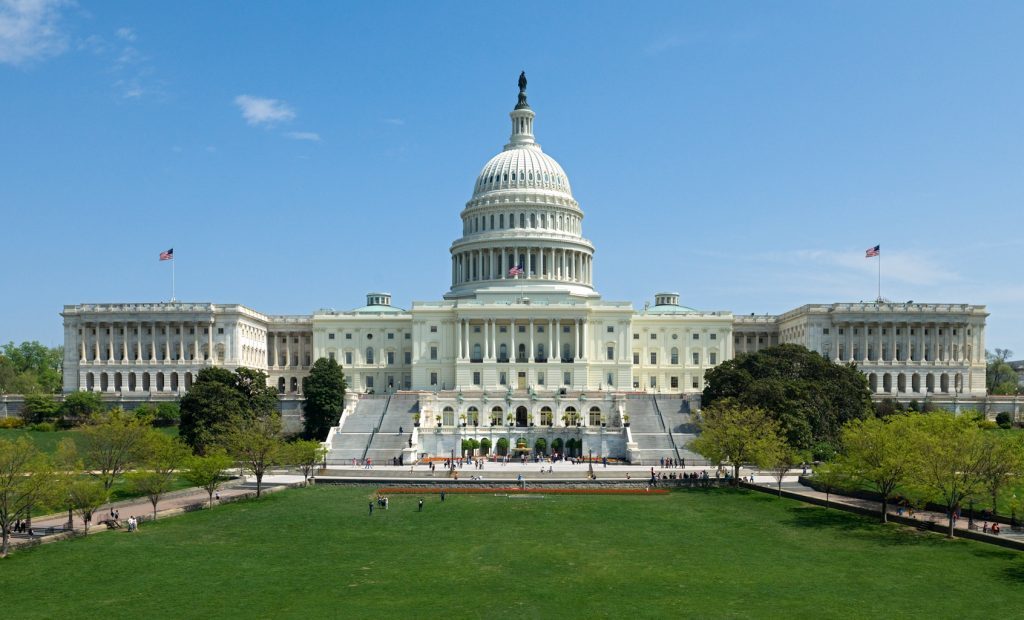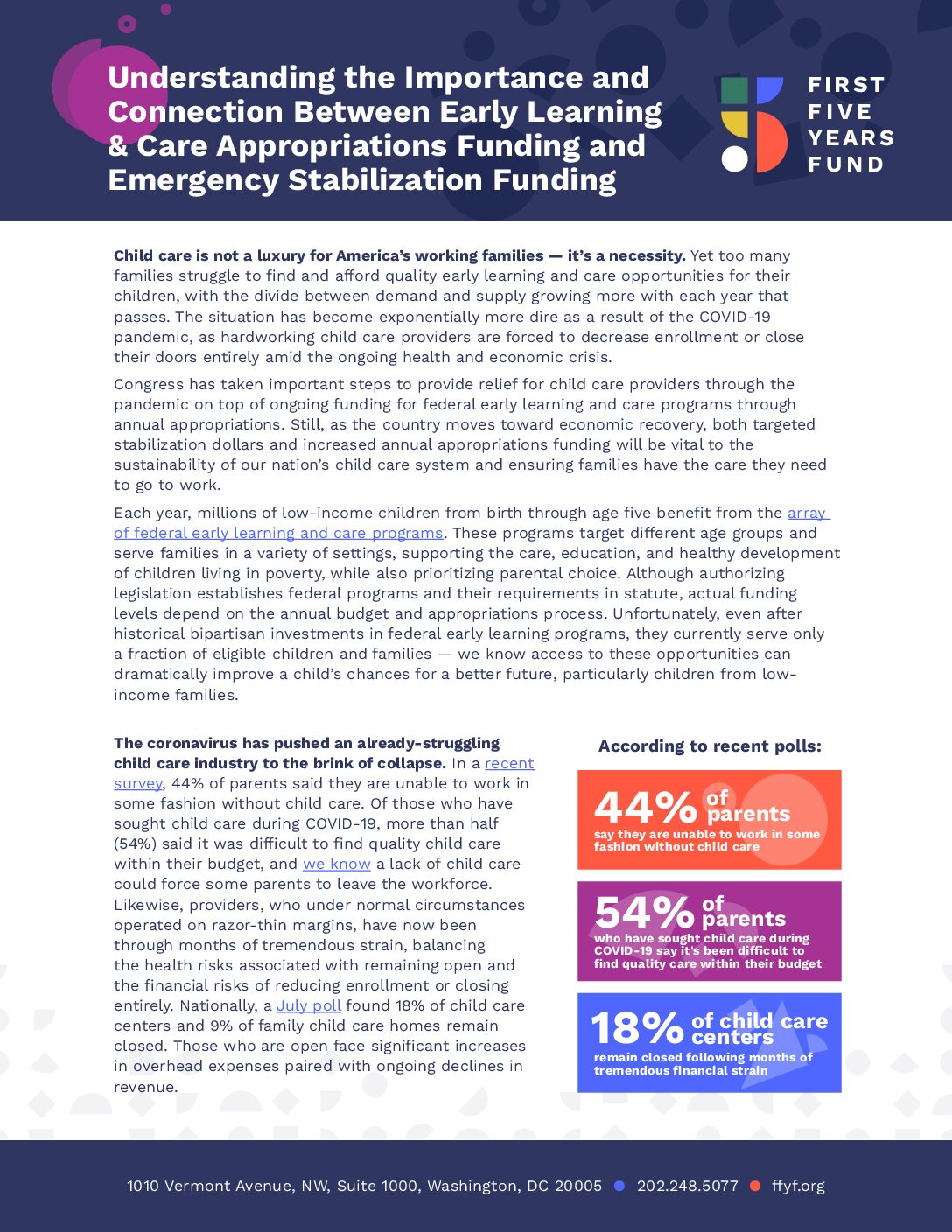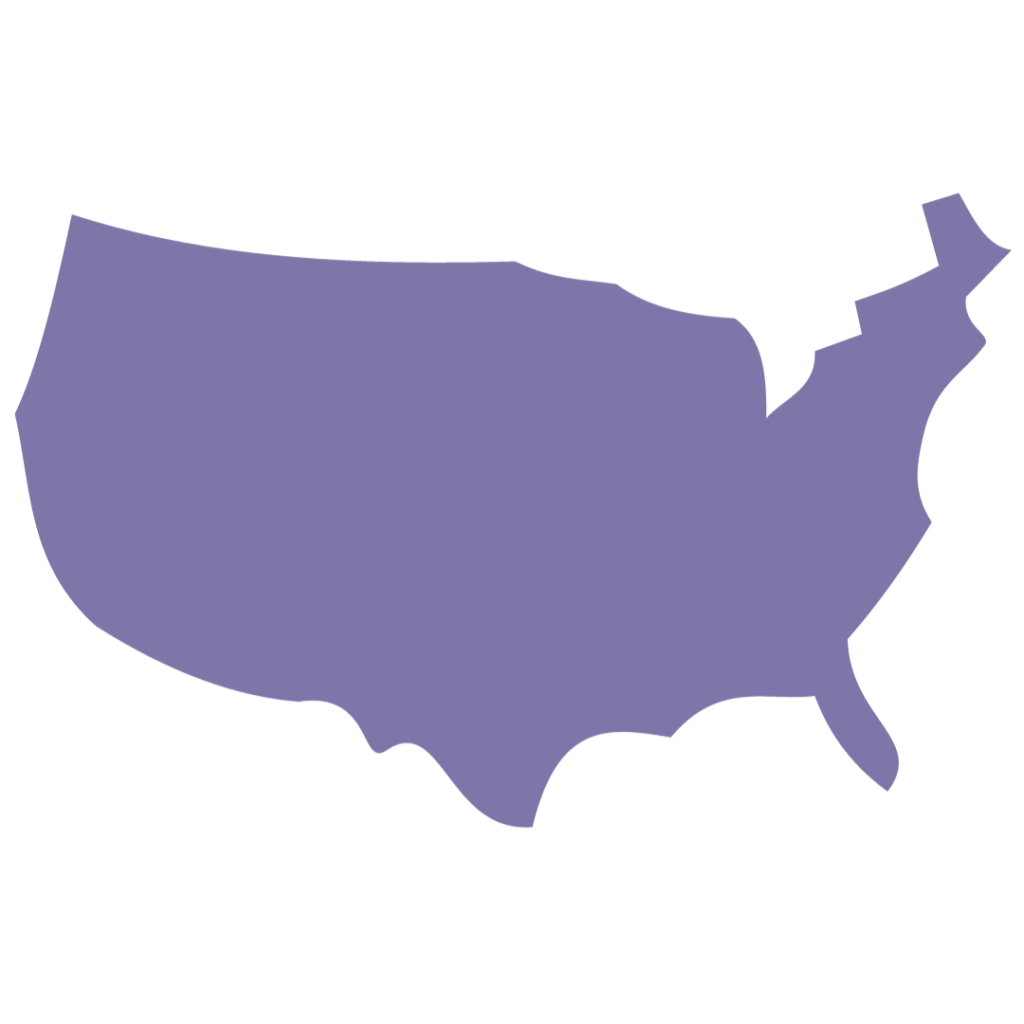Understanding the Importance and Connection Between Early Learning & Care Appropriations Funding and Emergency Stabilization Funding

Child care is not a luxury for America’s working families — it’s a necessity. Yet too many families struggle to find and afford quality early learning and care opportunities for their children, with the divide between demand and supply growing more with each year that passes. The situation has become exponentially more dire as a result of the COVID-19 pandemic, as hardworking child care providers are forced to decrease enrollment or close their doors entirely amid the ongoing health and economic crisis.
Congress has taken important steps to provide relief for child care providers through the pandemic on top of ongoing funding for federal early learning and care programs through annual appropriations. Still, as the country moves toward economic recovery, both targeted stabilization dollars and increased annual appropriations funding will be vital to the sustainability of our nation’s child care system and ensuring families have the care they need to go to work.
Each year, millions of low-income children from birth through age five benefit from the array of federal early learning and care programs. These programs target different age groups and serve families in a variety of settings, supporting the care, education, and healthy development of children living in poverty, while also prioritizing parental choice. Although authorizing legislation establishes federal programs and their requirements in statute, actual funding levels depend on the annual budget and appropriations process. Unfortunately, even after historical bipartisan investments in federal early learning programs, they currently serve only a fraction of eligible children and families — we know access to these opportunities can dramatically improve a child’s chances for a better future, particularly children from low-income families.
The coronavirus has pushed an already-struggling child care industry to the brink of collapse. In a recent survey, 44% of parents said they are unable to work in some fashion without child care. Of those who have sought child care during COVID-19, more than half (54%) said it was difficult to find quality child care within their budget, and we know a lack of child care could force some parents to leave the workforce. Likewise, providers, who under normal circumstances operated on razor-thin margins, have now been through months of tremendous strain, balancing the health risks associated with remaining open and the financial risks of reducing enrollment or closing entirely. Nationally, a July poll found 18% of child care centers and 9% of family child care homes remain closed. Those who are open face significant increases in overhead expenses paired with ongoing declines in revenue.
To address these needs, advocates have called for a dedicated child care stabilization fund to support providers regardless of setting, and since March, federal, state, and local leaders have acted in unprecedented ways to mitigate the effects of COVID-19. This work is not done, however, and Congress is faced with negotiating a recovery package while staring down a December 11 appropriations deadline. As summarized in the following table, child care must remain a priority in any future COVID response package, as well as in the appropriations process, to ensure the long-term recovery of the child care industry. One or the other is simply not enough.
Annual Appropriations Funding Compared to Emergency Stabilization Funding
| Annual Appropriations | Stabilization Funding |
| Go to a specific group of programs. These funds are intended for federal programs to operate and meet their statutory and regulatory requirements. | Could be distributed through existing funding streams, but would support the child care industry more broadly. These funds would be used to help existing providers reopen and operate safely, develop the supply of care given that many providers have closed permanently, and ensure care is available for essential workers. This is a necessary first step toward economic recovery. |
| Allocated for specific activities. For example, a portion of CCDBG funds must be used for quality improvement. Faced with limited funds, states already must balance implementing new requirements enacted in 2014, increasing payment rates, serving more children, or expanding eligibility. It’s unrealistic to expect these funds will also meet the needs generated by the pandemic. | Would be used for a range of activities based on state and local needs. Providers are facing increased costs for enhanced health and safety measures, including personal protective equipment, cleaning supplies and services, and making adjustments to facilities to ensure social distancing. At the same time, many providers are experiencing dramatically reduced enrollments. The rise in costs paired with a dramatic loss in revenue could force programs out of business. |
| Targeted at low-income families. Early learning programs are proven to improve outcomes for children from low-income families such that programs are focused on serving these families. Already programs reach just a fraction of eligible families, and with rising unemployment, eligibility for these programs is likely to increase. Without increased funding, there is no chance of keeping up with that demand. | Would be targeted at keeping the child care industry afloat during an unprecedented health and economic crisis.Access to child care has been limited for all families regardless of income, and support to the industry at large, as well as those serving low-income families, is needed before parents can return to work. |
| Include matching requirements as a condition of receiving funds. Many federal programs require states or grantees to contribute a portion of funds to receive funds. With state revenues in freefall, it will be more difficult for states to continue to meet these requirements. | Should have limited restrictions to receive funding. States are reeling from the impacts of COVID-19, and asking them to contribute more funds, on top of their existing obligations, may make it more difficult to channel funds where they are needed most. |
Subscribe to FFYF First Look
Every morning, FFYF reports on the latest child care & early learning news from across the country. Subscribe and take 5 minutes to know what's happening in early childhood education.




